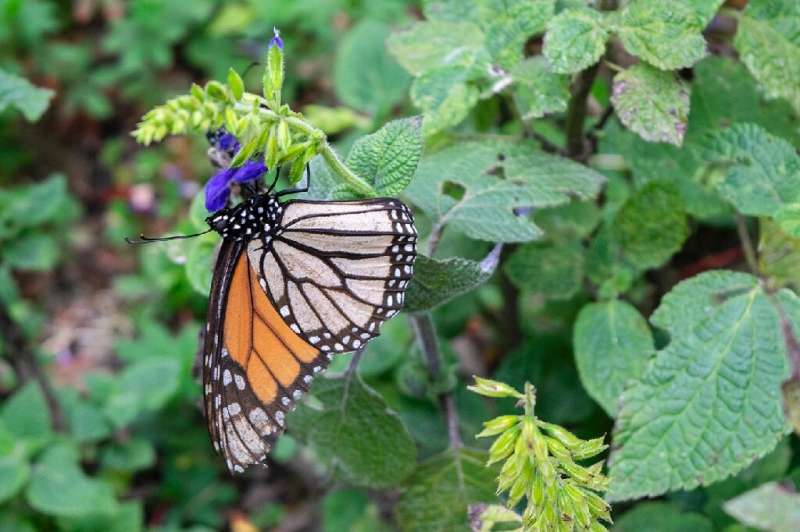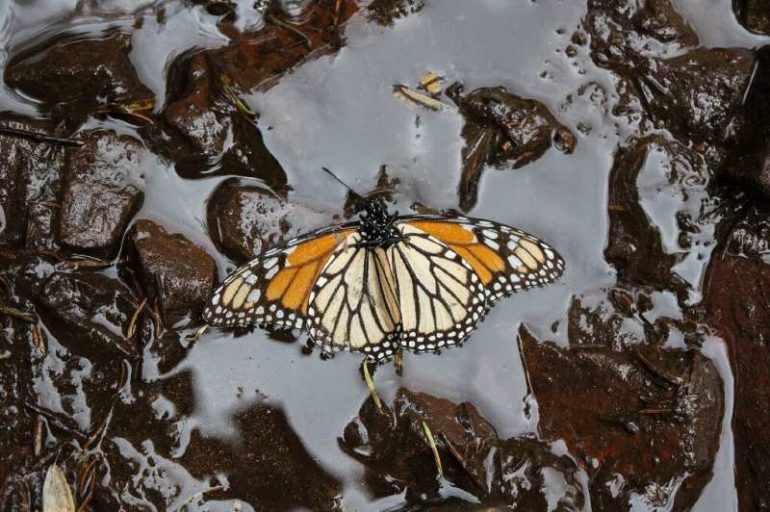When Canadian conservation enthusiasts head out to find monarch eggs, it’s always with a magnifying glass and a notebook. They are volunteers taking part in a summer census of the iconic, endangered butterflies.
July and August are the best months, when the monarch is visible in Canada at all stages of its development: eggs, caterpillar, chrysalis and adult butterfly.
It is also the reproduction period for the generation which will take off in a few weeks for a 4,000 kilometer (2,500 mile) journey to Mexico.
But it’s complicated research. “The monarch lays one egg per leaf. There are insects which can lay a dozen eggs all together while the monarch lays one. So we are looking for something very small,” explains Jacques Kirouac, who is among the hundreds of people who take part in the citizen science program Mission Monarch.
The eggs of these creatures known for their striking orange and black colors are off-white or yellow and about the size of a pinhead, with ridges that run from the tip to the base.
The species’s dire situation led to the creation five years ago of this program set up by the Montreal Insectarium to document monarch breeding grounds. The data is used by researchers, in particular to determine zones in need of protection. There are similar programs in the United States.
Monarchs of the eastern side of the continent are in a difficult situation: their population has decreased by more than 80 percent in two decades. Western monarchs—which hibernate in California—are even worse off: fewer than 2,000 were reported in the last census by Western Monarch Count, down 99.9 percent since the 1980s.
More generally, the disappearance of insects—less spectacular and less striking for the public than that of large mammals—is just as worrying, say the scientists.
They are essential to ecosystems and economies because they pollinate plants, recycle nutrients and serve as staple food for other animals.
‘Not enough data’
“It’s a beautiful butterfly. It would be a real loss to lose it,” says Renald Saint-Onge, also a volunteer for Mission Monarch.
This 73-year-old former carpenter and ornithologist feels driven to “save this butterfly.” So he decided to let grow at his home as many milkweed plants as possible. Often considered a weed, this perennial plant is the only one on which the monarch butterfly lays. But we find it less and less.

“The natural fields where we had milkweed and nectar-bearing plants are increasingly rare,” says Alessandro Dieni, coordinator of the Mission Monarch program. And the plants are “of lower quality because we have fields with monocultures everywhere” and an intensive use of pesticides in the country that killed them off.
Logging has also devastated forests in Mexico where the monarchs spend the winter.
Faced with the catastrophic decline of this insect, the Canadian government has decided to get involved in helping the monarch by seeking to protect its breeding grounds. “However, there was not enough data in Canada to know where to go to protect the monarch,” says Dieni.
The decline of insects, which represent two-thirds of all terrestrial species, dates back to the beginning of the 20th century, and accelerated in the years 1950-60 to reach alarming proportions over the last 20 years.
“Thanks to the censuses, we can now do more precise research,” explains Marian MacNair of McGill University.
“This allows us to better determine the routes taken, the conditions that the monarch particularly like,” adds the biologist who expresses amazement over this small, emblematic butterfly’s ability to fly thousands of kilometers.
The monarch butterfly makes a good study for scientists because often “we have great difficulty in observing the evolution” of populations of insects. But the monarch’s territory is rather small and therefore it is easy to do calculations and observations and document “the extent of the disaster,” explains MacNair.
California’s monarch butterflies could disappear, unless we act now
2021 AFP
Citation:
Hunt on for monarch butterfly eggs in the gardens of Canada (2021, August 28)
retrieved 28 August 2021
from https://phys.org/news/2021-08-monarch-butterfly-eggs-gardens-canada.html
This document is subject to copyright. Apart from any fair dealing for the purpose of private study or research, no
part may be reproduced without the written permission. The content is provided for information purposes only.



